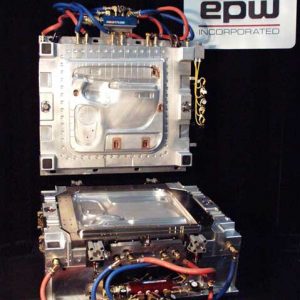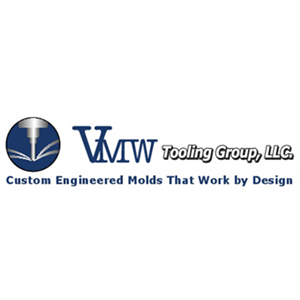SRIM – Structural Reaction Injection Molding
SRIM (Structural Reaction Injection Molding) has historically been a smart manufacturing choice for producing large economical parts that may have complex designs. SRIM is very important and under utilized by non-automotive product designers.
SRIM consists of a reinforced preform placed in a closed mold. The mold cavity is then filled with an impingement mixed resin that impregnates the reinforcement. The mold is filled with a runner system at low pressure, and reaction times are typically less than one minute.
The term structural in Structural Reaction Injection Molding has everything to do with the preform. The preform is a precursor to the finalized component, consisting of reinforcing fibers, core materials, and metal or plastic inserts. There is a lot of manufacturing freedom allowing different constructions. However the most common used material for the preform is fiberglass, due to its inherent low cost and performance. Different applications of the fiberglass have been used, including continuous strand mat, chopped glass, or woven cloth.
Cores may be used to shape the space to fabricate three-dimensional, low density thick parts. Reinforcements made of fiberglass and / or inserts may be placed around the urethane based foam core. The result is a SRIM manufactured part that is rigid, structurally strong, and very light-weight. In some applications metal inserts can be used for local strengthening or welding points.
It is critical to understand the flow behavior and the cure process of the resin during the filling. This will help predict concerns such as incomplete filling or thermal degradation.
Most SRIM molds have a center gated disk to minimize slippage of the mat during filling; however this may differ depending on application. There are important parameters to consider when designing products for the SRIM process such as flow rate, mixture temperature, wall temperature, pressure, and curing rates for consistent product strength, aesthetics, and pricing.
The first commercially manufactured SRIM part was the spare tire well cover. Today SRIM is used in manufacturing medical equipment, consumer appliances, industry specific components that require large solid one piece. In the automotive industry SRIM parts include door panels, inserts for instrument panels, floor boards, sunshades, and more. The application of the SRIM manufacturing process in other industries is limitless and used in manufacturing bath tubs, furniture, and satellite dishes.
Tooling for SRIM is typically made from steel, aluminum, or alloys. There are other applications where different materials may be used and it normally is contingent on production. Less expensive options are bonded ceramics, epoxy or kirksite. These materials are generally used for short production runs due to their poor thermal conductivity, and lower cycle times.
Advantages of SRIM:
- Large one piece part manufacturing
- Lightweight large parts
- Precisely located inserts
- Selected reinforcements
- Quick cycle times vs. vacuum cast materials
- Low pressure
- Low capital requirements
- Complex design



